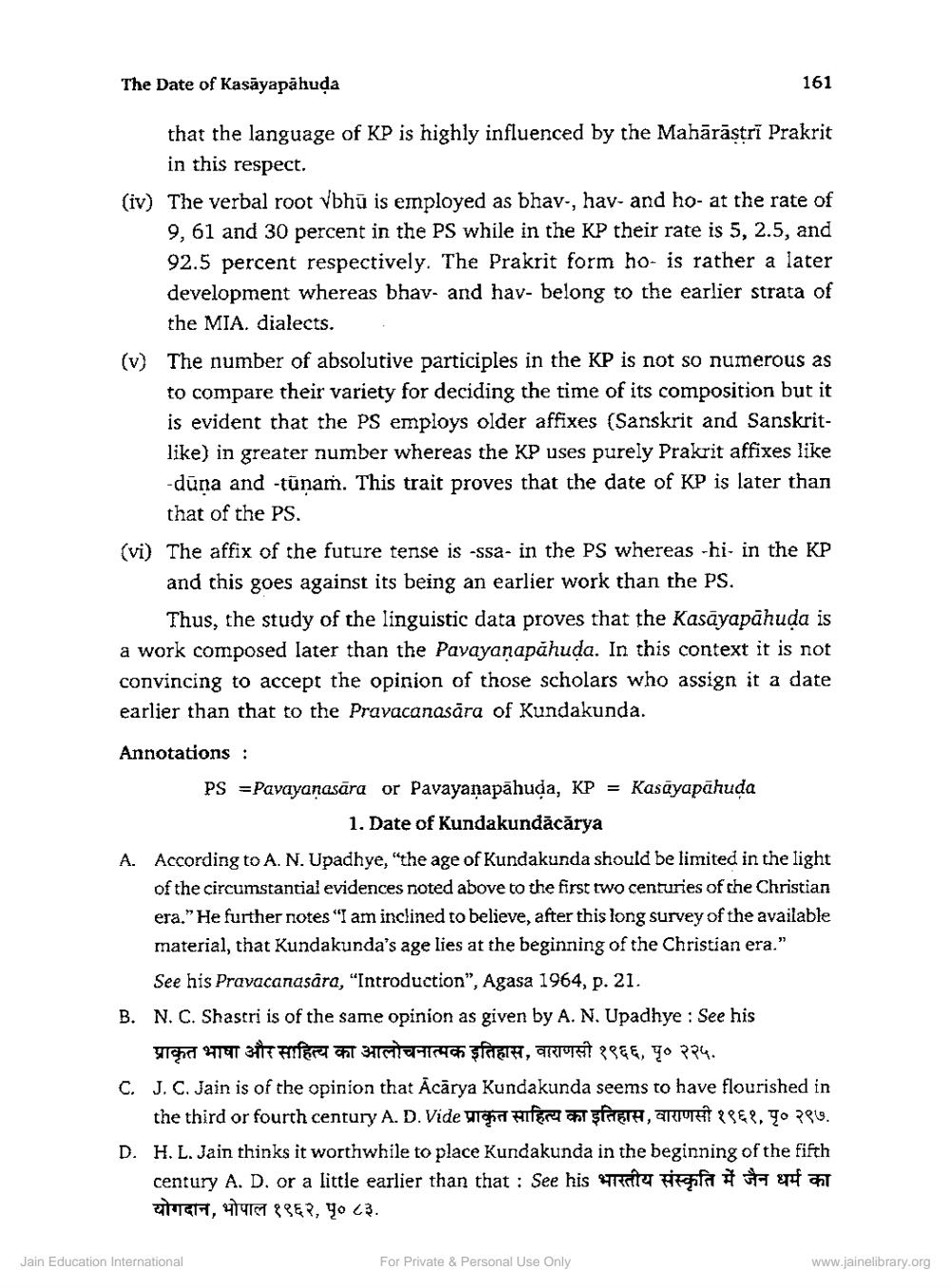Book Title: Date of Kasyapahuda Author(s): K R Chandra Publisher: Z_Nirgranth_Aetihasik_Lekh_Samucchay_Part_1_002105.pdf and Nirgranth_Aetihasik_Lekh_Samucchay_Part_2 View full book textPage 6
________________ The Date of Kasāyapähuda 161 that the language of KP is highly influenced by the Mahārāstri Prakrit in this respect. (iv) The verbal root Vbhū is employed as bhav-, hav- and ho- at the rate of 9,61 and 30 percent in the PS while in the KP their rate is 5, 2.5, and 92.5 percent respectively. The Prakrit form ho- is rather a later development whereas bhav- and hav- belong to the earlier strata of the MIA. dialects. The number of absolutive participles in the KP is not so numerous as to compare their variety for deciding the time of its composition but it is evident that the PS employs older affixes (Sanskrit and Sanskritlike) in greater number whereas the KP uses purely Prakrit affixes like -dūna and -tunam. This trait proves that the date of KP is later than that of the PS. (vi) The affix of the future tense is -ssa- in the PS whereas -hi- in the KP and this goes against its being an earlier work than the PS. Thus, the study of the linguistic data proves that the Kasāyapāhuda is a work composed later than the Pavayanapahuda. In this context it is not convincing to accept the opinion of those scholars who assign it a date earlier than that to the Pravacanasāra of Kundakunda. Annotations : PS =Pavayanasāra or Pavayanapāhuda, KP = Kasāyapāhuda 1. Date of Kundakundācārya A. According to A. N. Upadhye, "the age of Kundakunda should be limited in the light of the circumstantial evidences noted above to the first two centuries of the Christian era." He further notes "I am inclined to believe, after this long survey of the available material, that Kundakunda's age lies at the beginning of the Christian era." See his Pravacanasāra, "Introduction", Agasa 1964, p. 21. B. N. C. Shastri is of the same opinion as given by A. N. Upadhye : See his प्राकृत भाषा और साहित्य का आलोचनात्मक इतिहास, वाराणसी १९६६, पृ० २२५. C. J. C. Jain is of the opinion that Ācārya Kundakunda seems to have flourished in the third or fourth century A. D.Vide uretan Fifer Castre, ARTP8€8. Ço 7849. D. H. L. Jain thinks it worthwhile to place Kundakunda in the beginning of the fifth century A. D. or a little earlier than that : See his rice fisgata f or at योगदान, भोपाल १९६२, पृ०८३. Jain Education International For Private & Personal Use Only www.jainelibrary.orgPage Navigation
1 ... 4 5 6 7
